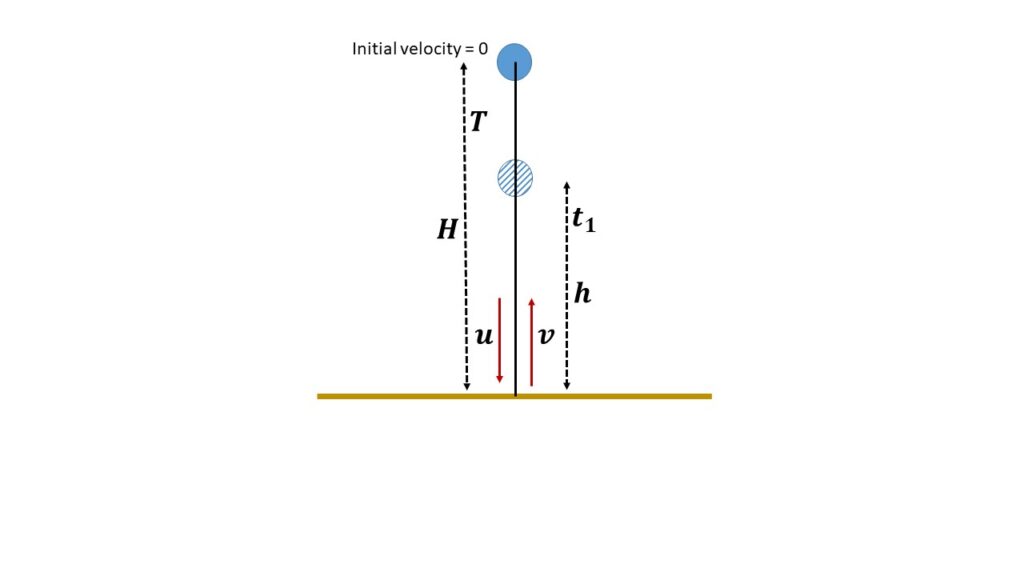Ans.
A particle is dropped vertically on a fixed horizontal plane from a height \( H \) above the plane.
At height \( H \) the particle is at rest, i.e., the initial velocity of the particle is zero.
Let \( u \) be the velocity of the particle just before the collision with the plane and \( v \) be the velocity just after the particle hits the plane, as shown in the Fig. 1

Let \( T \) be the time taken by the particle to cover the height \( H \) just before the 1st collision with the plane, then
\( u=0+gT \)
or, \( u=gT \)
where, \( g \) is the acceleration due to gravity.
Let, \( t_1 \) be the time taken by the particle after 1st collision to reach the height \( h \), then
\( 0=v-gt_1 \)
or, \( v=gt_1 \)
If \( e \) be the coefficient of restitution, then
\( e=\frac{v-0}{u-0} \)
or, \( e=\frac{v}{u} \)
or, \( e=\frac{gt_1}{gT} \)
or, \( e=\frac{t_1}{T} \)
or, \( t_1=eT \)
If \( t_2 \), \( t_3 \) and so on, be the time taken by the particle after 2nd collision, 3rd collision and so on respectively, then
\( t_2=et_1=e\cdot{eT}=e^2T \),
\( t_3=e\cdot{t_2}=e^3T \),
and so on \( \cdots \)
So the total theoretical time taken by the particle to come to rest is
\( T+2t_1+2t_2+2t_3+\cdots \)
=\( (2T+2t_1+2t_2+2t_3+\cdots)-T \)
= \( (2T+2eT+2e^2T+2e^3T+\cdots)-T \)
= \( 2T(1+e+e^2+e^3+\cdots)-T \)
= \( \displaystyle{2T\frac{1}{1-e}-T} \)
= \( \displaystyle{T\frac{2-1+e}{1-e}} \)
= \( \displaystyle{T\frac{1+e}{1-e}} \)
Again, \( H=0\cdot{T}+\frac{1}{2}gT^2 \)
or, \( \displaystyle{T=\sqrt{\frac{2H}{g}}} \)
Therefore, the total theoretical time taken by the particle to come to rest is
\( \displaystyle{\sqrt{\frac{2H}{g}}\cdot{\frac{1+e}{1-e}}} \)